https://kirschsubstack.com/p/83-of-the-residents-of-a-nursing
A Twitter user named "Facts are Good" is attempting to convince people that I don't know how to analyze data. The Real Truther challenged me to respond to her posts. I am not the enemy.Executive summary
A Twitter user called “Facts are Good” claims to be an expert in data analysis and claims I don’t know what I’m talking about.
She thinks that 83% is nowhere near 100% and that since I didn’t explicitly call out the timeframe in a rate I cited, I should be attacked.
I disagree. Simply point out the clarification if you think I made an error.
And when will we be able to talk about the people who are dying instead of attacking me.
I am not the enemy.
Tweet #1
Here are the two images in that tweet:
What she does is she hides the last black bar behind a blue bar where you can’t see it. Bar 5 is partially hidden. Bar 6 is totally obscured. I guess that’s acceptable.
Here’s the source data:
As you can see from the first column which are the deaths in that week, there are 6 instances of deaths, all 22 people except the first one which is 21. 6*22-1 is 131 exactly as I stated.
If you do an average on the last column which is occupied beds, you can see that there was an average weekly occupancy of 48.77 beds which I rounded to 50 for the article she snipped from.
So what was the death rate in that facility?
The facility had 48.77 occupied beds. Death rates can be calculated in a variety of ways.
The best way is relative to the average occupancy of the facility in person-months.
The denominator is 634 person weeks which is 158 person-months.
The numerator is 131 person deaths.
A 100% death rate per person-month would be 158 people dying over the 158 person month period.
There were 131 deaths over that period.
131/158 is 83% which I simply said was “close to 100%” death rate per person-month.
Apparently she thinks that 83% is “nowhere near” 100%.
Well, this is very subjective. Here’s what Bard said:
I guess I’ll have to be more careful next time, but my point is that if you have 83% of your occupants dying in a month, that’s pretty extreme turnover. Standard turnover for US nursing homes is 40% of your average occupancy in a year which is 3.3% of average occupancy per month.
Facts are Good completely misses the big picture that a facility with an average weekly occupancy over the entire year of 51.7 people has 131 people die over all of 2021 and all 131 deaths are all within 3 months of the vaccine and there are no other deaths.
83% of the average capacity died each month for 3 months straight and then the deaths stopped.
I consider that a disaster. But she is basically calling me out and claiming that 83% is “nowhere near” 100%.
Someone is missing the big picture here. The sky is falling at that facility and Facts are Good is nitpicking whether 83% is close to or “nowhere near” 100%.
This is the wrong thing to focus on. Focus on the disaster of people dying please.
Example #2
OK, so this is a different nursing home.
Here’s the graph I made so you can see that “Facts” is once again hiding her black bars behind the blue bars:
Here are the numbers in plain sight and it was right in the article:
You can see there were 63-3 deaths coming into the 2 month period and 213 total deaths at the end so there were 153 deaths in the two month period.
You can also add up the weekly deaths and get the same number.
There were 58 deaths from COVID, yet only 20 COVID cases. The average ratio of deaths to cases is roughly 1:5. So seeing a ratio of 2.9:1 is really stunning and statistically very unlikely… almost 3 times as many deaths as cases detected.
My point was a reasonable lower bound on the number of actual COVID deaths is the # of infections, but this is really missing the point.
The point is that you have a facility with an average weekly occupancy of 98.5 and you had 153 deaths over that period. 153 deaths / 98.5*(2 months) = .77 deaths per person month which is 1.55 person deaths per 2 month period.
So my 153% death rate should have specified it was a rate over a 2 month period.
I wrote “So all 153 deaths in 2 months (basically a stunning 153% death rate) …” and assumed that people would figure out that the rate was relative to the 2-month period and not a weekly, annual, monthly, bi-weekly, quarterly unit of time.
I apologize for the omission.
The point is that in a roughly 100 bed facility, 153 people died in a two-month period. That’s a disaster.
Instead of attacking people for not explicitly citing the units and calling them wrong, she could have politely suggested that the rate quoted should have been clarified that it was a death rate relative to average occupancy over a two month period.
I’ve fixed the wording so it now reads:
So all 153 deaths in 2 months (basically a stunning 153% death rate over the 2 month period relative to the average occupancy).
Where is the outrage?
You’d think people would be outraged at the absurdly high death rates that simply cannot be caused by COVID. Even if COVID infected an entire facility, the death rate wouldn’t be over 20% in a month relative to average occupancy for the month.
But it appears not.
Summary
The average mortality rate in US nursing homes relative to average occupancy is around 40% per year. So a facility with 100 beds that are always filled should expect to see 40 deaths over the entire year. This is slightly more than a 3% death rate per month based on average occupancy.
When we see monthly death rates relative to avg occupancy of 83% and 77% respectively, someone should be pointing out that we have a major problem.
Instead, I get attacked because in some people’s opinion, 83% is “nowhere near” 100%, and in the second case because I failed to make it explicit the rate was over a 2 month period (it was implied but not explicit).
I hope that someday, people will:
If someone makes a mistake of omission, politely tell them “Hey, you should clarify the units” rather than engage in insults
Focus their energies on the people dying at absurd excess death rates in nursing homes and demanding to know what the cause is because it sure isn’t COVID.
I am not the enemy.



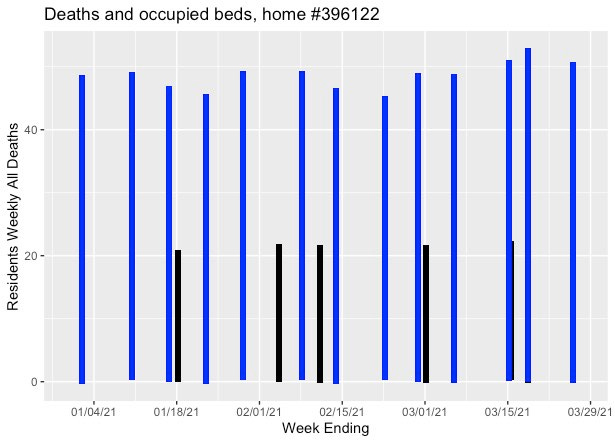

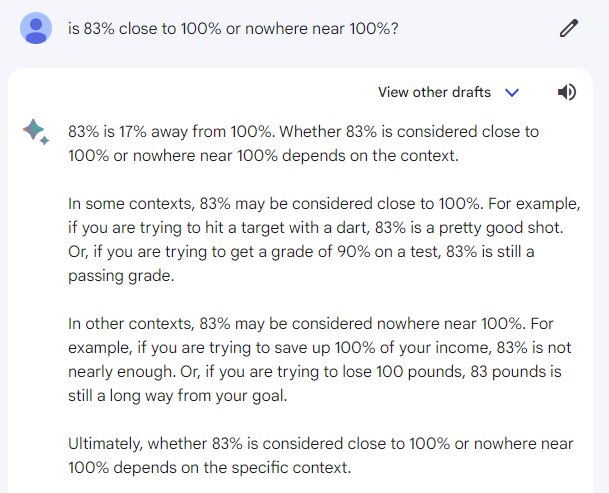
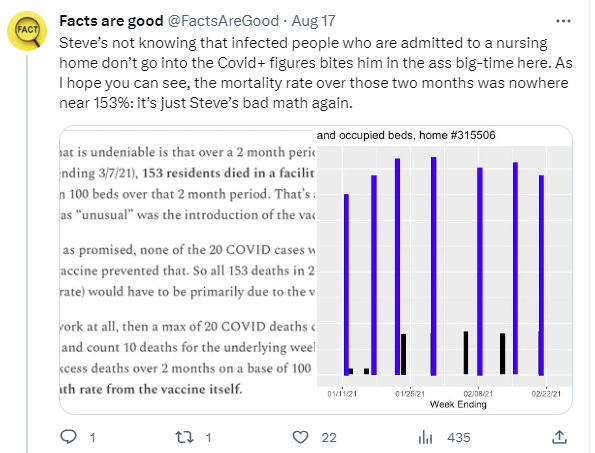
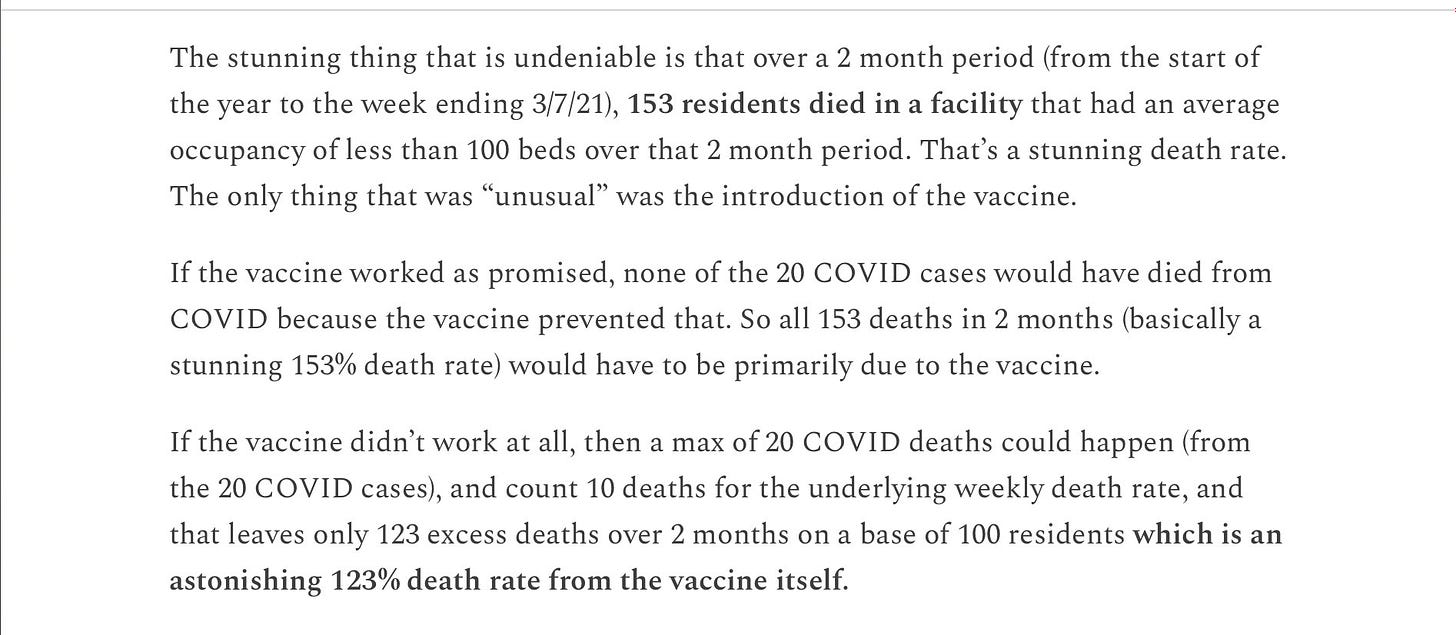
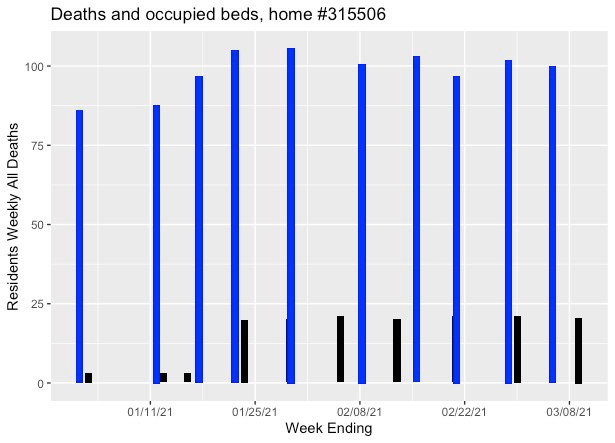
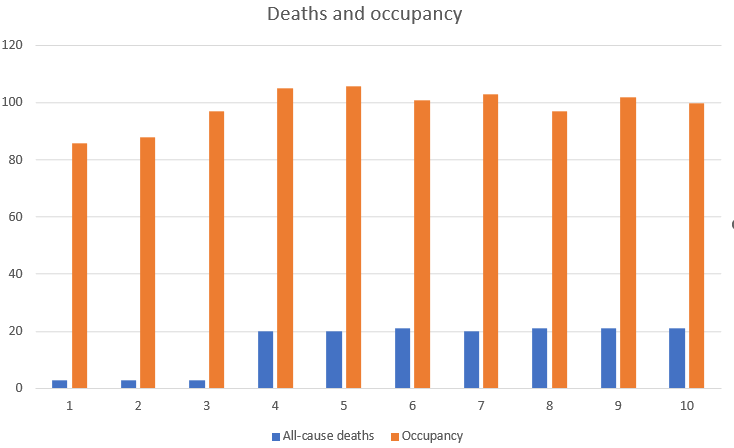
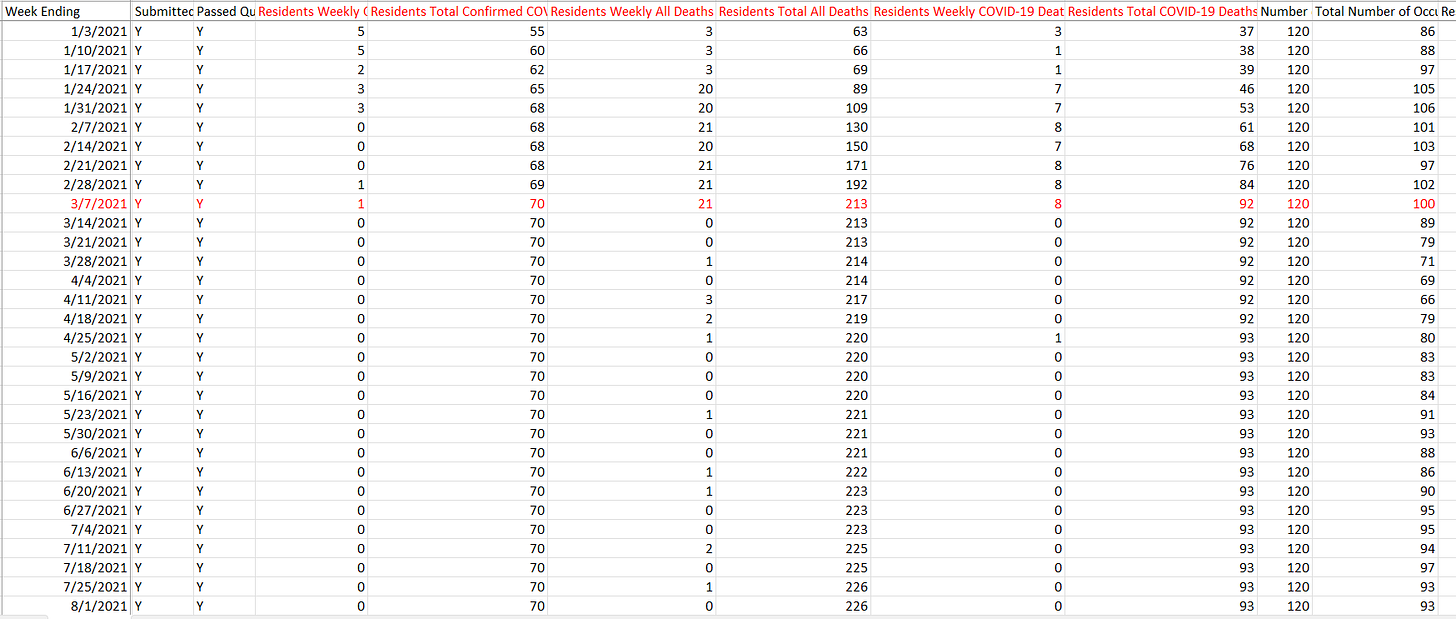

No comments:
Post a Comment
Note: Only a member of this blog may post a comment.